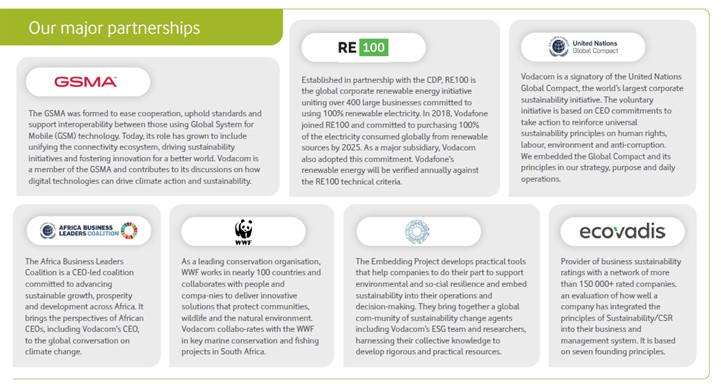We address the global climate crisis through our efforts to mitigate and address our climate-related impact and risks.
At the core of our climate action, we are:
- Embedding climate change into our governance process
- Assessing the actual and potential impacts of climate-related risks and opportunities on our business strategy to better understand and build resilience in the transition
- Leveraging the Group’s enterprise-wide risk management framework, which includes identifying, assessing and responding to climate-related risks.
Managing climate-related risks and opportunities
Vodacom’s climate programme
Climate change threatens Africa with increased frequency and intensity of droughts, heatwaves and severe flooding. This presents material risks – physical and transition - to our operations, value chains, and the communities we serve. Effectively managing climate-related risks and opportunities is central to the success of our climate programme. We conduct scenario analysis, invest in capacity building and we continuously refine our responses including our policy and risk management frameworks
Our Climate Transition Plan (CTP) serves as a strategic roadmap for navigating these challenges. It outlines the key management actions necessary to support our transition to a low-carbon future and to enhance our climate resilience. Our CTP includes:
- Clear objectives and targets aligned with science-based pathways.
- Defined actions and resource allocations to reduce our operational greenhouse gas (GHG) emissions (Scope 1 and 2).
- A focused approach to managing Scope 3 emissions through near-term initiatives and stakeholder collaboration.
Through this programme, we aim to embed climate resilience into our core business strategy, ensuring long-term value creation and environmental stewardship.
Notable severe weather impacts
We take a three-pronged approach to extreme weather disruptions:
- We act quickly to restore our network.
- We support our affected customers including providing free minutes and data and regular weather updates in several OpCos.
- In partnership with government and non-profit organisations, we mobilise humanitarian assistance by making donations and partnering with governments and aid organisations.
Advocating for change
Cooperation and collective action beyond our value chain are essential to address the systemic challenges of climate change, environmental degradation and biodiversity loss while responding to the changing regulatory context. We engage with industry peers, global UN bodies and non-governmental organisations to support and drive collective change.

Read more in papers where we have collaborated on business and sector initiatives:

 Lesotho
Lesotho Tanzania (EN)
Tanzania (EN) DR Congo
DR Congo Mozambique
Mozambique South Africa
South Africa